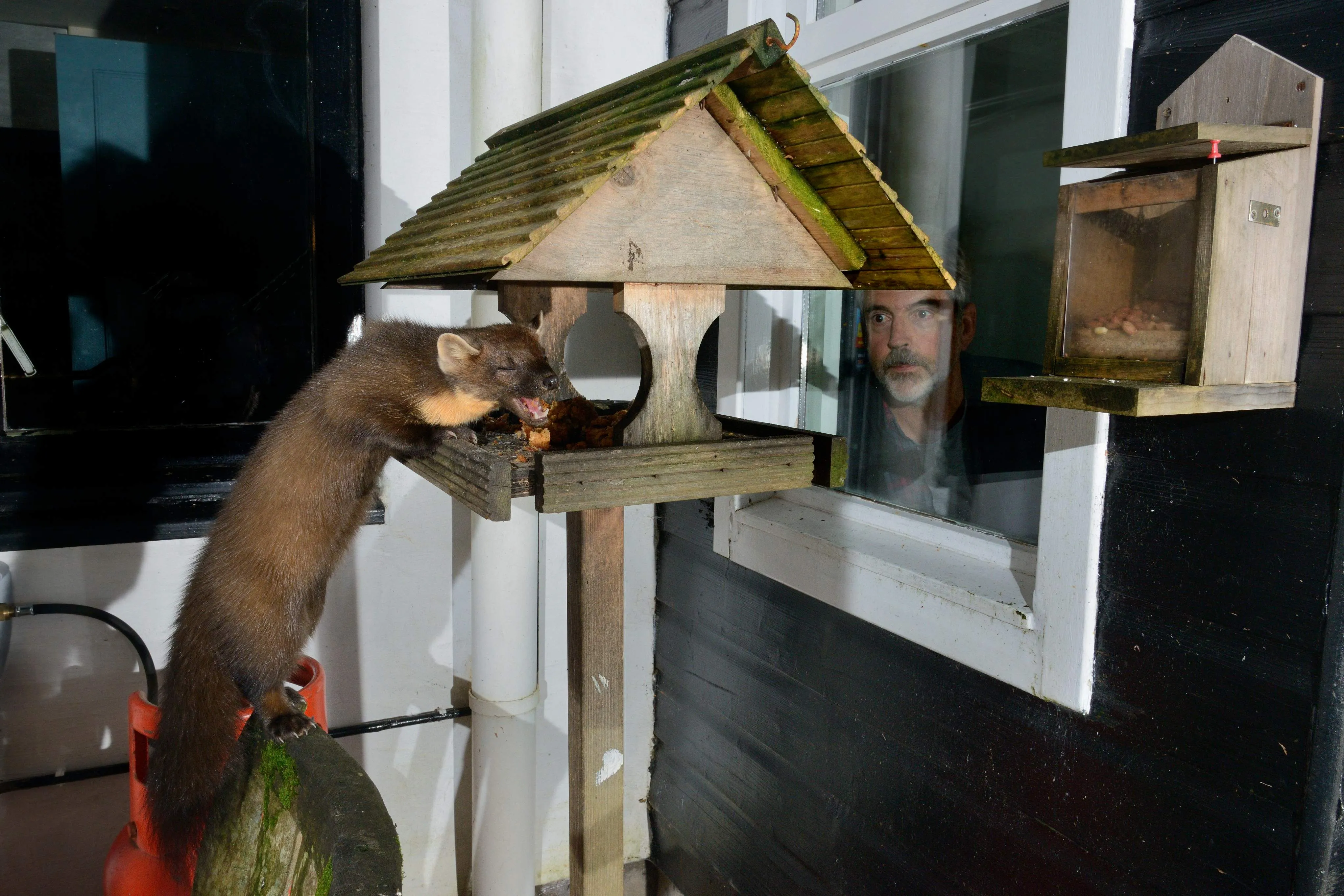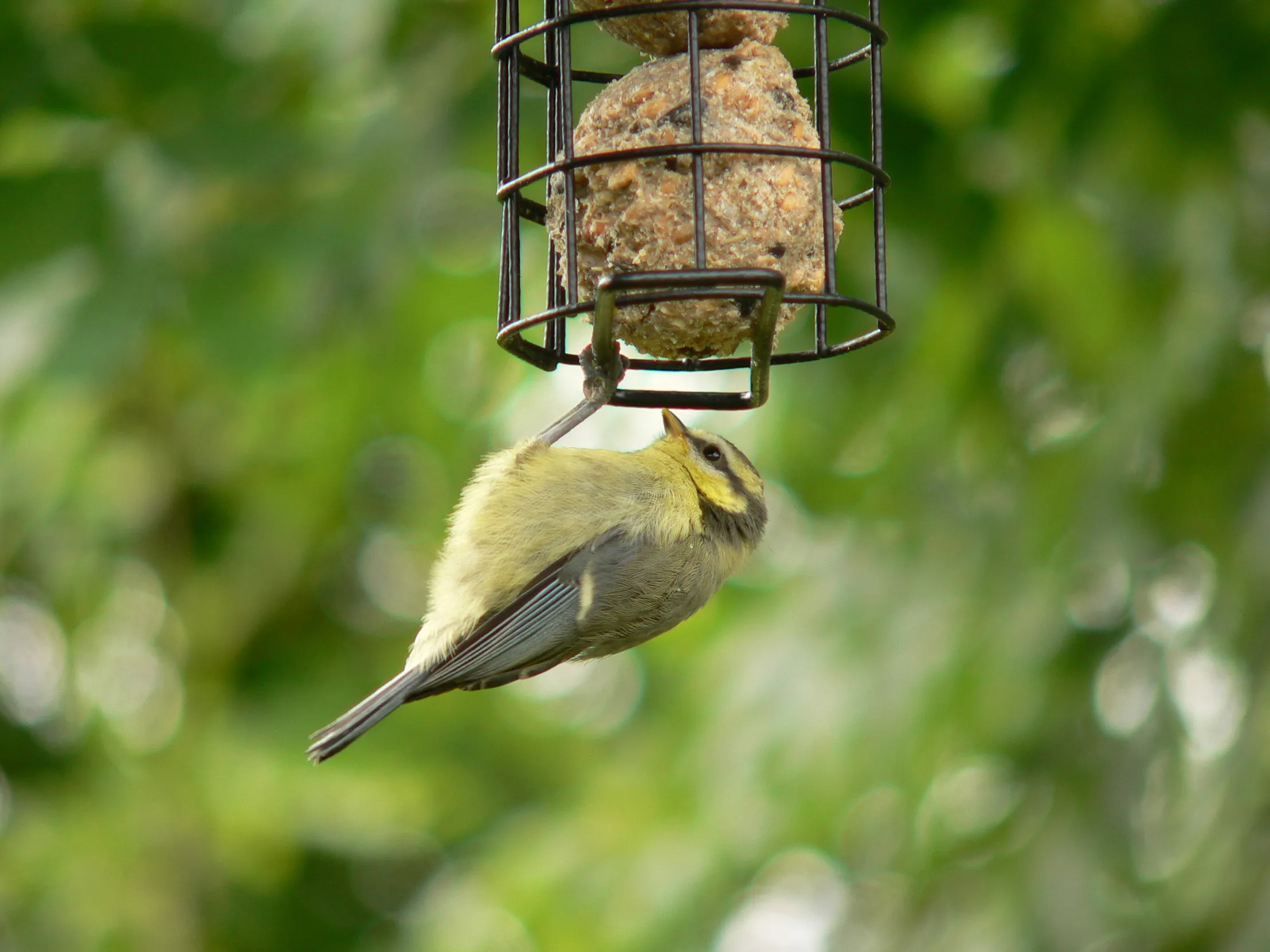
You saw what on your bird feeder??
Ever had a FREEZE moment when you spot something odd out of your window? A 'don’t panic’ manic ten seconds trying to find your glasses to confirm your eyes aren't playing tricks?

On this page
With food becoming scarce, winter is a time when more unusual species can make an appearance on your patch as the hunger kicks in.
And with Big Garden Birdwatch just around the corner, we’ve taken a look through RSPB images for photographic evidence of the oddest/rarest birds spotted on feeders and bird tables…as well as a few opportunist hungry mammals.
Moorhen
First up, the Moorhen. Okay, not that rare, but on a bird feeder? The blackish bird with a red and yellow beak is more likely to be spotted lurking around the edges of ponds and lakes in the countryside as well as cities. Its diet is made up of seeds, water plants, grasses, snails, worms and small fish. But if the water is frozen or there is a short supply of food, they will seek out sustenance where they can, including very occasionally bird feeders. This one was photographed in Suffolk.
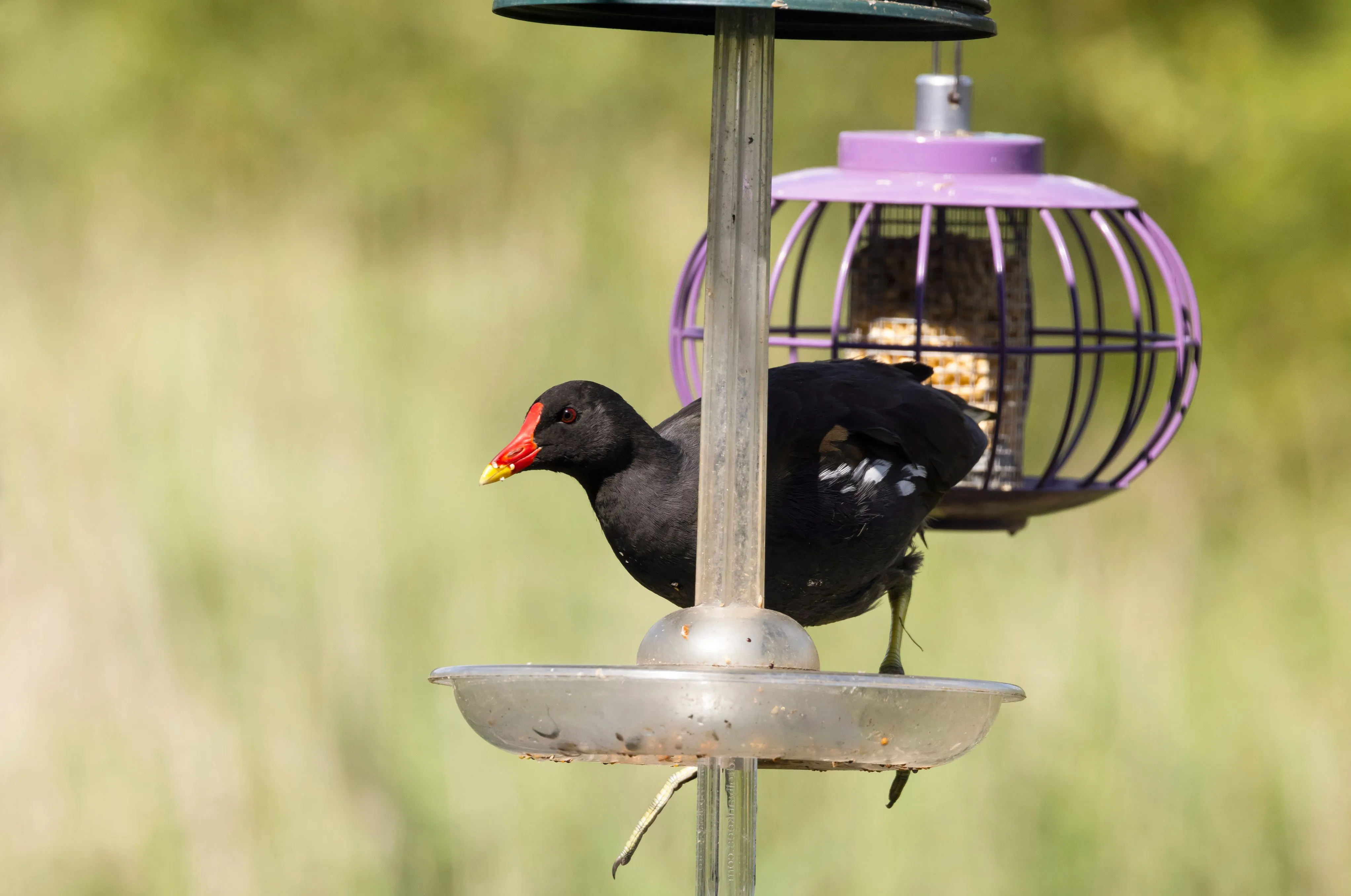
Jay
The electric blue flash of a Jay dashing into our gardens is increasing. They’re shy birds who mainly live in woodland, where they eat small mammals, insects, nuts and seeds. In Big Garden Birdwatch 2023, Jays came in at number 35, while the year before they ranked higher at number 23.
Famously they bury acorns in autumn as a secret stash to see them through the winter. But if they run out and there’s little else to eat, they sometimes visit gardens for peanuts. Their call is often a giveaway, a loud angry sounding screech, often issued in flight as if they’re annoyed you’ve interrupted their dinner.
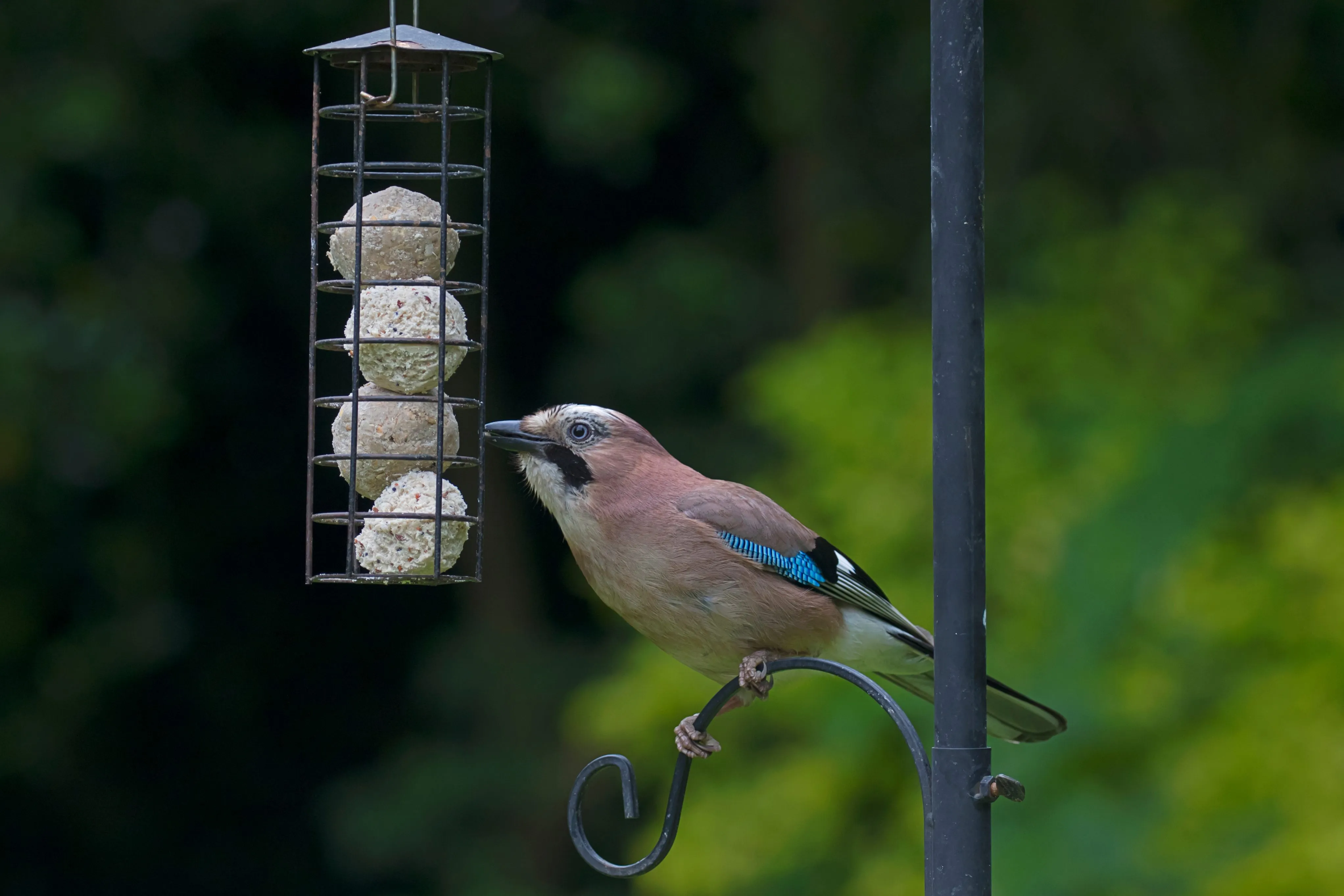
Tree Sparrow
The country casual relation of the House Sparrow may dress a little sharper, but they’re much shyer and aren’t as common in our gardens or outdoor spaces. You’re more likely to see one in hedgerows but they do come to gardens, mainly in rural areas across the Midlands, north-east England and eastern-Scotland. Like House Sparrows, they like a good seed mix.
Lesser Redpoll
This finch may be tiny – only slightly bigger than a Blue Tit – but they are a master of acrobatics. They’re woodland dwellers, often spending time dangling from tiny twigs in birch and alder trees. But they will visit gardens when the going gets tough and are a particular fan of Nyjer seed.
In winter they can turn up in most places in the UK.

Fieldfare
These large chattering thrushes flock to the UK in winter, but mainly spend their time out in the countryside. They love berries but if snow covers the hedges and fields, they sometimes turn up in gardens looking for food. The blue-grey birds with a speckled chest particularly like fruit such as apples and will boss other birds away to keep it for themselves.
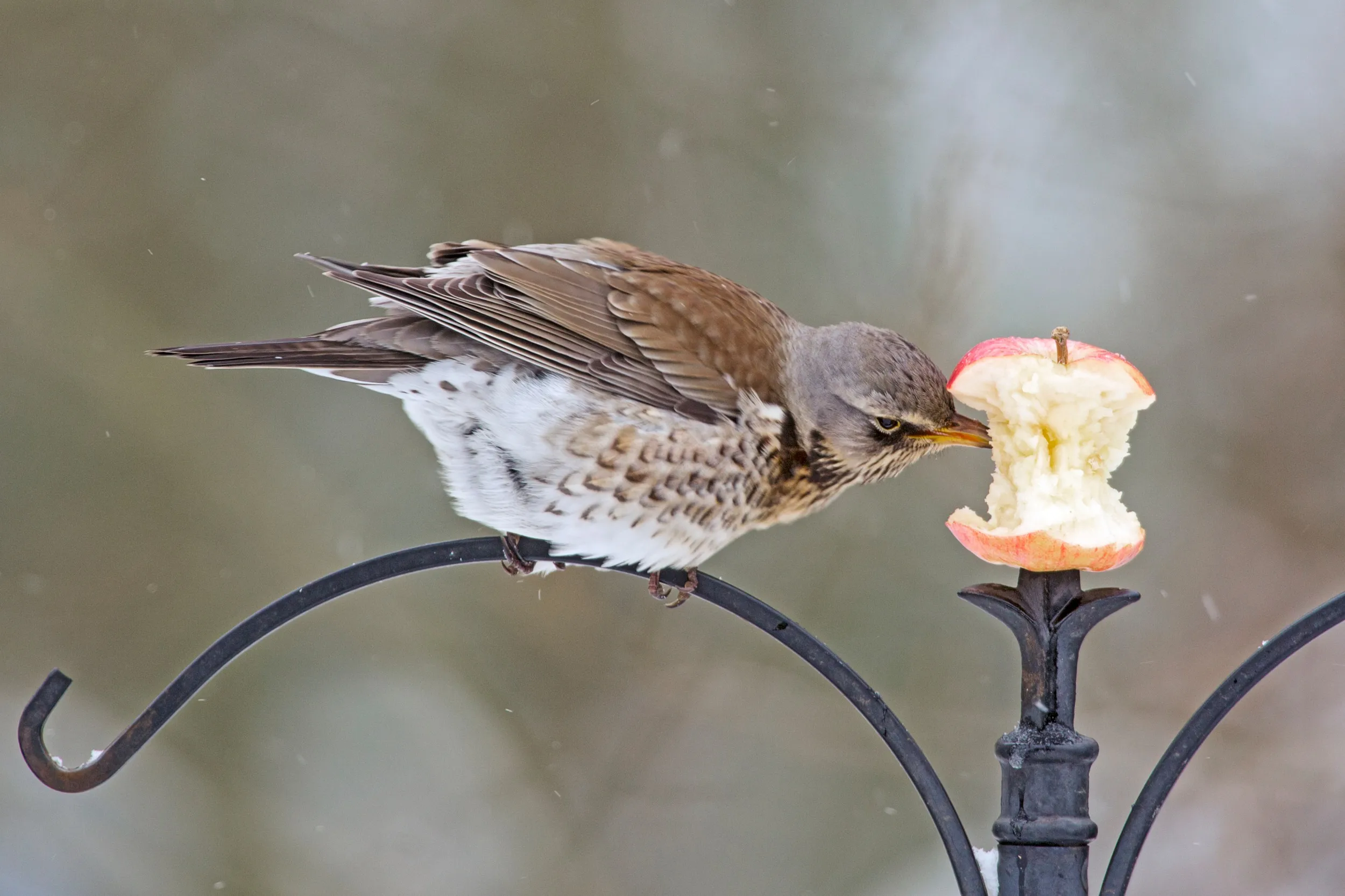
Brambling
Another winter visitor which usually spends winter out in the fields and beech woodland. They look like a slightly larger Chaffinch, with the male more orange than the bright red of a Chaffinch. The two species often join together in flocks and when the weather gets extreme they can show up in gardens. They usually like feeding from the floor or a bird table, with sunflower hearts a favourite.
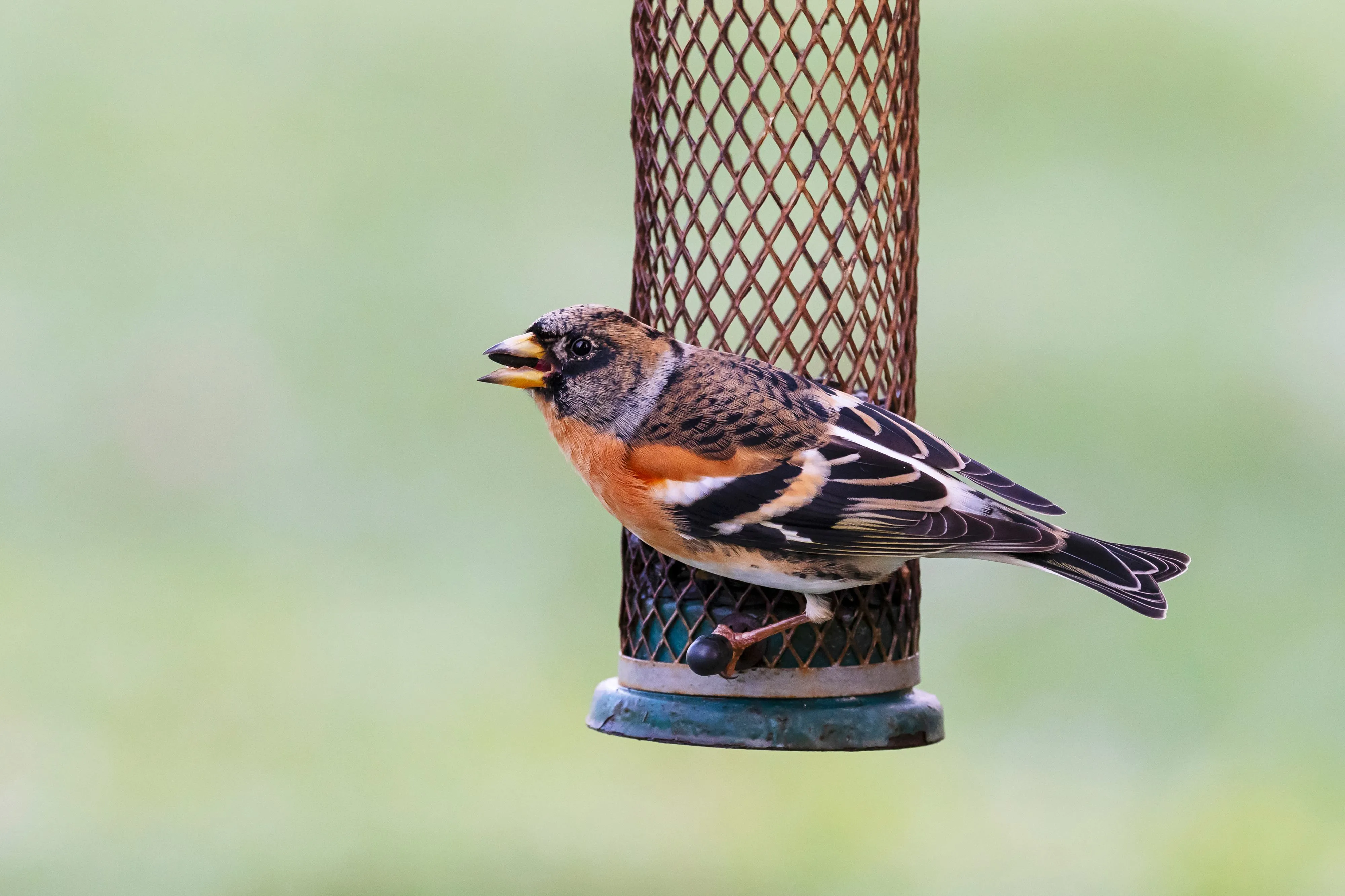
Nuthatch
This plump little bird around the size of a Great Tit doesn’t flit far from woodlands or mature parks. It can be spotted climbing up tree trunks or creeping under branches but will come to feeders for peanuts and seeds if its natural food sources are in short supply. They’re here all year round throughout England and Wales, with the occasional sighting in southern Scotland.
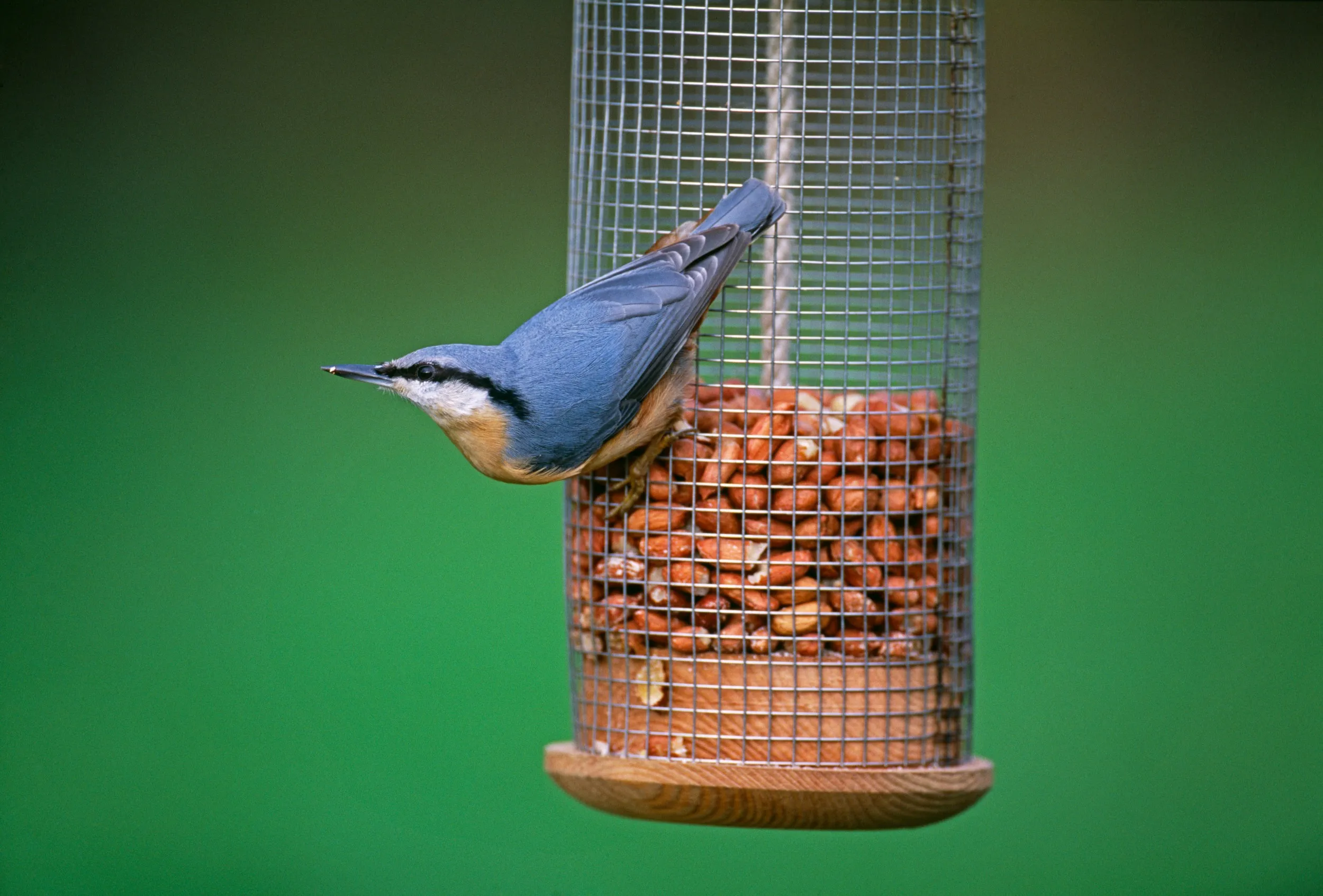
Marsh Tit
Marsh Tit may be their name, but these little birds with a black cap are usually spotted in broadleaf woodland, parks and sometimes gardens. They’re known hoarders and if they find your feeder, they’re likely to come back time and time again to stash seeds away. Sunflower seeds are a firm favourite. Mainly seen in Wales and southern and eastern England.

Really rare feeder sightings
Crested Tit
These Mohican donning tits are pretty much confined to the Caledonian pine forests and Scots pine plantations in northern Scotland. But if you’re lucky enough to live close by or visiting the area, the acrobatic little bird will visit feeders. It can often be seen with other tits, scooting from place to place on the hunt for suitable seeds.
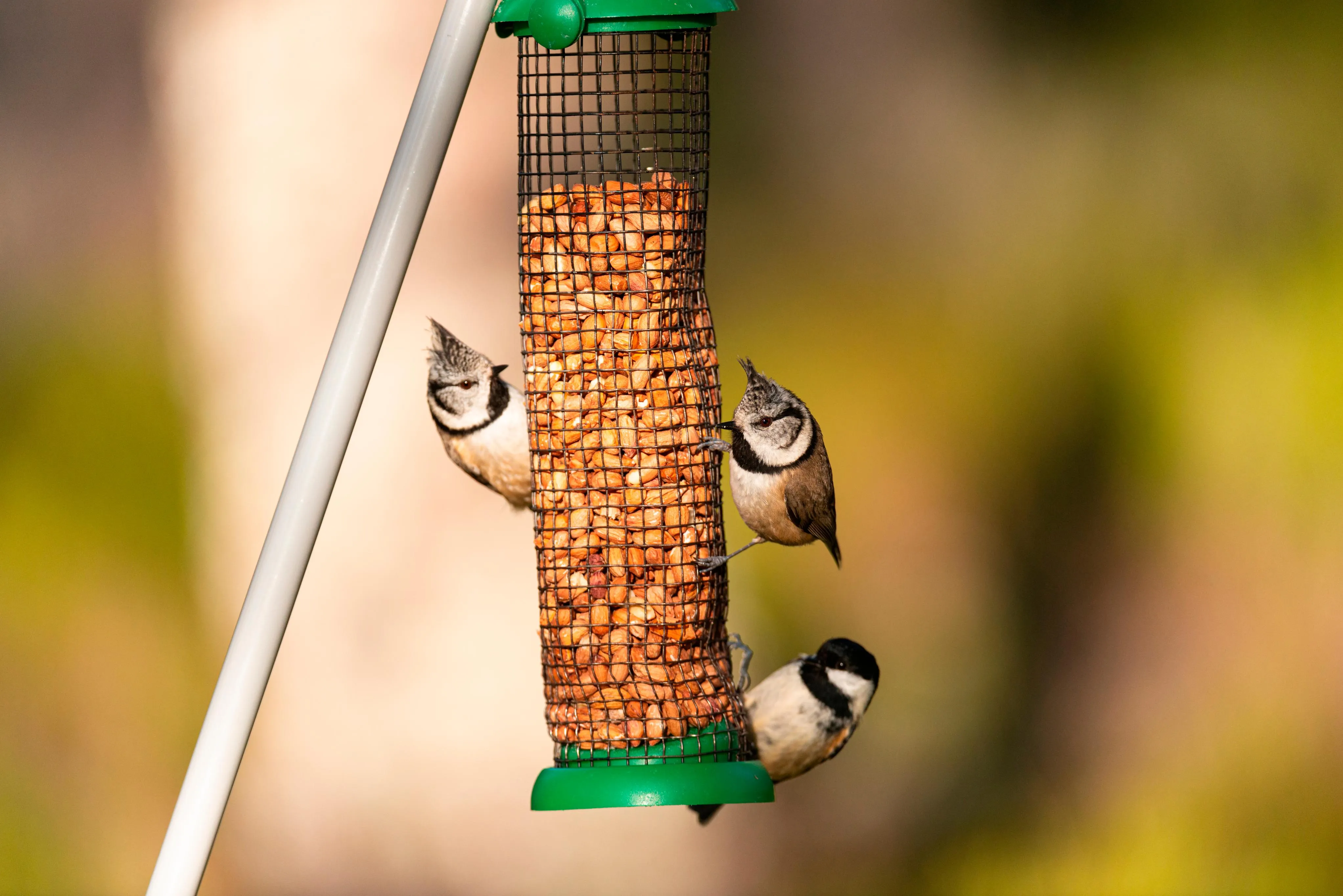
A few other notable inclusions
We spoke to the RSPB team who came up trumps with some other spots, just without pictures.
These included Waxwings, Reed Buntings, Yellowhammers and Rosy Starlings. But the most ambitious bird award has to go to an optimistic Pheasant which was seen at an RSPB nature reserve trying its very best to get on a hanging birder feeder.
Hungry mammals
It’s not just the birds which can cause a double take moment at feeders. Hungry mammals also make an appearance, and we’re not talking Grey Squirrels.
Wood Mouse
Our most common mouse, with big eyes and ears, often lives in gardens and parks. No surprise then that occasionally they’re spotted on feeders, making the most of a plentiful supply of seeds. They often keep coming back to top up their underground winter stash.

Red Squirrel
Much rarer than the Grey Squirrel, but if you’re lucky enough to have them close by they will visit feeders.
If a bushy red visitor does make a call, they’ll eat a wide range of nuts and seeds, with hazelnuts being a favourite, especially in their shells.
If they’re taking peanuts make sure they’re aflatoxin-free and try to offer a range of other foods like sunflower seeds or sweet chestnuts.
NOTE: Don’t encourage Red Squirrels to visit if you have Grey Squirrels about. The larger non-native grey can spread squirrel pox to Red Squirrels which is lethal to them.
Badger
Okay this is a squirrel feeder rather than a bird feeder. But imagine the scramble for a camera if you saw a crafty Badger climbing up to get to the peanuts. During winter the black and white striped mammals don’t hibernate but spend most of their time asleep in their sett, living off fat reserves. If you do see them and want to give them a boost, unsalted peanuts and Brazil nuts go down well, as do fruits or veg, like carrots or cooked potatoes.

Fox
We know they’re crafty, but this move takes the biscuit. Or peanuts and chunks of apple to be precise. Like Badgers, Foxes are omnivores and their usual diet is made up of berries and fruit as well as creatures like rabbits, rodents and frogs.
If snow falls it makes food hard to find, so Foxes will sniff out a meal in ingenious ways, including climbing on bird tables.
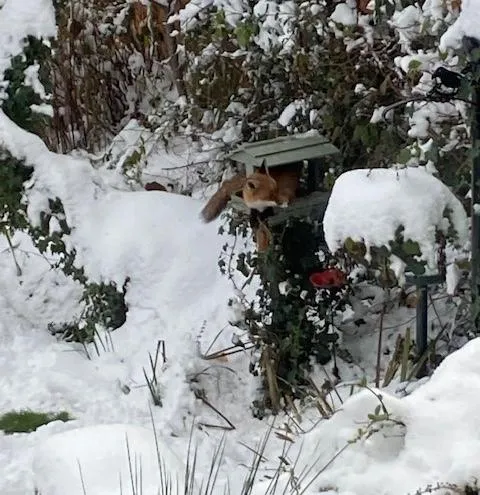
Pine Marten
The elusive Pine Marten comes out at night to scamper through the trees. It’s mainly found in Scotland, with small numbers in isolated pockets in England and Wales. If you’re lucky enough to have one or two living close by, they have a penchant for peanuts and raisins and will visit bird tables to stock up. The one pictured is tucking into fruitcake, which, as for us, should be an occasional treat.
